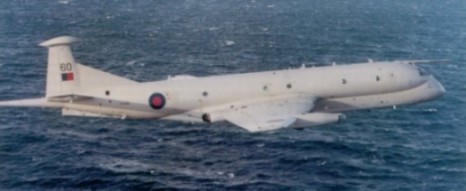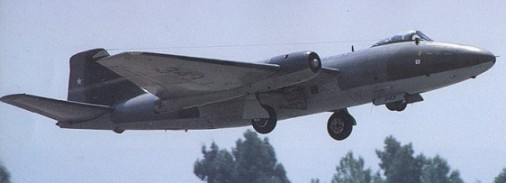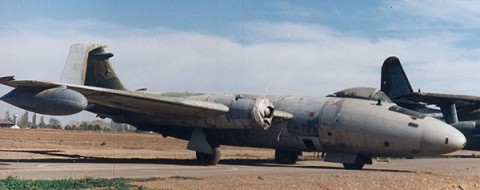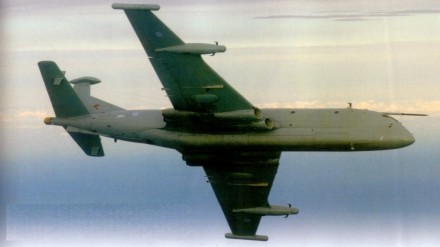The Falklands Campaign – the Chilean connection
Since the end of the Falklands War in 1982 there has been considerable speculation about the support and facilities provided by Chile to the UK. The recent publication of ‘The Official History of the Falklands Campaign’ by Sir Lawrence Freedman has at last shed fresh light of what actually happened.
When the Falklands War broke out, Chile still had a long-standing dispute with Argentina over access to the Beagle Channel, making the chance of military co-operation between Britain and Chile a distinct possibility. However, considerable misgivings about any such co-operation existed on both sides – Chile was wary of being seen to support an ‘old-world’ power in a dispute against its neighbour and Britain viewed the many human rights abuses in Chile with evident distaste. Nevertheless, despite the problems identified by both sides, needs must -as is so often the case in times of crisis. The exact details of what co-operation was agreed between the two countries remains unclear, but it was always to be covert.
Chilean bases offered UK forces the only realistic chances they had of decent facilities within reasonable reach of both Argentina and the Falklands Islands. Chilean good intentions were clear when the offered to delay the handover of HMS Norfolk which had been sold to the Chilean Navy on 6 Apr 82. The age and equipment on board this old warship was of little real benefit to the Task Force, however, they also offered to delay the handover of the Royal Fleet Auxiliary Tanker, HMS Tidepool, which was of far more use. This vessel refuelled at Curacao and on 14 Apr 82 sailed to join the Task Force before playing a vital role in the re-capture of South Georgia.

Recognising how little direct support the Royal Air Force could give to the Task Force, UK MOD were very keen to base Nimrod Maritime Patrol Aircraft (MPA) in southern Chile where they could be used to locate and identify Argentinean warships. Its unclear from the official history whether the UK MOD also intended to also deploy a Nimrod R1 ELINT aircraft to southern Chile as part of this arrangement, but the similarity of the two aircraft would help disguise the presence of the R1, whilst enabling the aircraft to eavesdrop on Argentinean communications, as well as identifying the location of radars and other electronic transmissions. To encourage Chilean co-operation, Britain was prepared to offer to sell to Chile a number of Hunter aircraft that they have previously expressed an interest in acquiring. The Chilean authorities, were slowly warming to the idea of Nimrod aircraft operating from one of their air bases, however, to ensure the operation remained covert, they preferred that the aircraft operate from the island of San Felix, some 1,900 miles from the likely area of operations, rather than directly from an airbase in southern Chile. Nevertheless, doubts still remained and the British Ambassador in Chile warned that if RAF aircraft flew into Argentinean airspace from Chile ‘short term military benefits will be outweighed by long-term political consequences’.

As well as the Hunter fighter aircraft, Chile had also previously expressed an interest in purchasing a number of Canberra PR9 reconnaissance aircraft, although they had already rejected three refurbished Canberra PR9s for being too expensive. Even before the Falklands War broke out, the RAF had offered to lend the Chilean Air Force, the Fuerza Aerea De Chile (FACH), some of their own Canberra PR9s to conduct a land survey over Chile. As this offer still stood, a proposal was made to the Chilean authorities that two Canberra PR9s would be sold to Chile, at probably half the previously quoted price, and delivered by RAF crews. In Chile the RAF crews would train the FACH crews to fly the Canberra PR9, whilst carrying out ‘training’ photographic reconnaissance sorties from an air base in southern Chile. Exactly where these ‘photographic reconnaissance sorties’ would take place is not specified, but it is believed that they would have targeted the Falklands Islands, to provide information on the disposition of Argentinean forces, in advance of a landing. This proposal got as far as the Canberra crews being selected and put on standby to move, before it was cancelled by Chile because they believed the aircraft would be identified and probably shot down.

Nevertheless, the Chilean authorities were still keen to acquire the two Canberra PR9s and after further negotiations it was agreed on 16 Apr 82 that they would be sent to Chile on loan, trial or for purchase, accompanied by two supporting C-130 Hercules, all in Chilean markings. Although the Chilean authorities had no intention of purchasing any Nimrod aircraft, they also agreed that Nimrod’s would be permitted to fly anywhere in Chilean airspace on transit and would even be permitted to land in an emergency. Chile also agreed to supply the UK with details of any Argentinean surface movements they acquired. It was recommended that the two Canberra’s and two C-130’s depart for Belize as a matter of urgency, to pre-position for the journey to Chile. The four aircraft soon arrived in Belize and on 26 Apr 82 the two C-130s, disguised in Chilean markings applied in Belize, arrived in Santiago – the Canberra’s were expected to arrive just after dawn on 30 Apr 82.
However, for a variety of political reasons, Chile suddenly began to get cold feet and warned Britain that, if the Canberra PR9 operations were detected by Argentina or the Press, the Canberra detachment of 18 officers and 24 SNCOs who had arrived on one of the supporting C-130s would be required to leave Chile immediately. Then on 27 Apr 82, a report in the Daily Star suggested that F-4 Phantom fighters and supporting Victor tankers had secretly flown to Punta Arenas, an airbase in southern Chile. This report was completely untrue – the F-4s and Victors were destined for Ascension Island, just north of the equator, where they remained for the duration of the war.

However, as further newspaper reports appeared suggesting that Chile had already given permission for the RAF to use their airbases, it was decided to delay the arrival of the Canberra’s until things had quietened down. Eventually the Chilean authorities gave permission for the Canberra’s to arrive on 3 May 82, but by then the UK had begun to reassess the need for the Canberra’s to fly reconnaissance sorties over the Falkland Islands – perhaps by this time they had received suitable satellite imagery from the USA. Eventually three Canberra PR9s were delivered to Chile on 15 Oct 82 – long after the war had finished. The three aircraft, RAF serials XH-166, XH-167 and XH-173, became FACH serials 341, 342 and 343 respectively – 342 was subsequently lost in a crash and the other two aircraft have now retired to the Aeronautics Museum in Santiago. A number of Hunters were also air freighted to Chile in 1982 as part of the arrangements for providing support of UK operations in the South Atlantic. Chile also collected information on Argentinean air movements, using a powerful radar supplied by Britain that had been sited near the border with Argentina, and the information obtained was quickly relayed back to the UK via a satellite link and then onto the Task Force, enabling the air defence Sea Harriers to anticipate the eventual arrival of Argentinean aircraft in the Task Force area of operations.
There is, however, one report of Canberra PR9s operating in Chile during the Falklands War which remains unexplained. Jon Snow, a highly experienced TV news reporter, who spent a considerable time in South Africa and became familiar with the Canberra, reported seeing more than one PR9 at Punta Aernas during the war. The official history makes no mention of this and states that the PR9s never got further south than Belize, so it's really a question of who you believe. After the Falklands War one PR9 was briefly decorated with a large drawing of a winking Snoopy, the Beagle dog in the 'Peanuts' cartoon strip, possibly an oblique reference to clandestine operations over the Beagle channel off South America. But until this report can be independantly confirmed with genuine photographic evidence, it must remain just speculation and could simply be Jon Snow, a well known left-wing rabble-rouser, getting up to his old tricks.

The Nimrod MPA proposal was also a success. A single aircraft, supported by a VC-10, operated from San Felix Island, flew at night to the Chilean air base at Conception where it refuelled, before flying out into the South Atlantic. The first sortie was flown on 9 May 82, followed by others on 15 May and 18 May and although Admiral Woodward was keen for further sorties between 19-21 May, the Chilean authorities were insistent that the operation end and the Nimrod was withdrawn. It is still unclear whether any of these three sorties were actually undertaken by a Nimrod R1 of 51 Sqn, rather than a Nimrod MPA. A single Nimrod R1, XW664, was certainly involved in the Falklands War and returned to RAF Wyton on 22 May 82, four days after the last sortie was flown from San Felix Island – a timely coincidence!!
In summary, Chilean support to UK forces during the Falklands War was far more than was realised at the time. The subsequent delivery of three Canberra PR9 aircraft was not significant, but the Nimrod sorties in May 82 did provide what has been described as ‘limited, but significant information’ – perhaps disguising an even greater role undertaken by a Nimrod R1. Undoubtedly the most significant assistance provided by Chile, which can be confirmed with certainty, was in allowing a powerful radar to be sighted near the border with Argentina to give advance warning of Argentinean fighters taking off for sorties against the Task Force. Certain previous histories of the Falklands Air War, noteably 'Sea Harrier over the Falklands' by Commander Sharkey Ward, have commented on how the RN Sea Harriers often had an uncanny ability to be in the right place at the right time when attacking Argentinean fighters arrived. We now know that it certainly wasn’t due to the telepathic ability of the brave, but rather self-serving and egotistical ‘Sharkey’ Ward, but was yet again down to the timely gathering and dissemination of accurate intelligence.